MacMillan: Triple Bill (Royal Ballet)
Kenneth MacMillan's choreographic work often clashed with his role as director of firstly, the Deutsche Oper ballet, and then the Royal Ballet, yet when he was able to concentrate on his creative skills there were some remarkably imaginative results, despite nearly constant criticisms from some quarters.
He was known for trying to stretch the performers, yet remaining within a basically classical framework and here, the Royal Ballet performs three of his shorter works as a celebration of what would have been his 80th birthday. All three pieces, composed between 1966 and 1992, had already become standard repertoire for the company and are a refreshing challenge to what many may see as a stagnant art form.
The programme has also very recently been broadcast on BBC 4, and so may well be available to view online for a little while, should you be inclined to feel inquisitive.
The DVD, for some reason, rearranges the order of the original programme, although you can of course select which work you want to play first, but I'll go through them as it was in the theatre.
Concerto (1966), is a work which was written as the finale to another 'triple bill' of his work for the Deutsche Oper ballet. It is set to Shostakovich's 2nd Piano Concerto, and is basically an abstract work but which is as immediately approachable and memorable as the music itself.
The outer movements are similar, in that they consist of a pair of soloists, flanked by the corps, whose grouping constantly changes, yet their movements are often regimented, reflecting the music's own militaristic rhythms very effectively. Actually, the third movement should have two main soloists, but just before the first performance, the male dancer injured himself, and so MacMillan decided there and then that the female dancer should go on by herself every time.
Yuhui Choe and Steven McRae start things off in great style and show a great deal of musicality and trust in each other as they fling themselves around the stage, and in the finale, Helen Crawford strikes an almost forlorn figure as she struts her stuff (sans partner) before she is eventually joined by those from the other movements to complete a unashamedly fun piece.
The central, slow movement is the highlight however. For this show, Marianela Nuñez and Rupert Pennefather had the roles and the ballet is suddenly transformed into a very special work indeed. Apparently based on MacMillan's memories of Lynn Seymour exercising at the bar, the basic 'warm up' becomes so much more than a few stretches and lifts. The fact that Pennefather allows Nuñez to shine as much as she does shows what an understanding partner he is. This small section, much as it does when you only have the music playing, will have a great effect on you if you allow it.
John B. Read's lighting is stunning in its simplicity, and the completely bare stage allows plenty of room for the whole ensemble to show itself off, which it does very well in the main. Unfortunately, and I'm ready to admit it could have been a trick of the light in a few places, or indeed my complete lack of expert knowledge in this field, it seemed that a few members of the corps weren't as together in their movements, or indeed standing positions, as they could have been making a few sections look a bit scrappy.
In the pit, the music goes along very well indeed, with Jonathan Higgins doing a sterling job as the soloist, and overall the balance between piano and orchestra is a lot better than you would hear on a stage. If anything, the last movement could go a lot quicker, but at the real tempo I suspect there would be some injuries on stage and it bounces along quite cheerfully all the same. As shame the end of the 2nd movement was interrupted by applause as the music should be continuous, but I won't mark anything down for that.
Second on the bill is MacMillan's last ever ballet, The Judas Tree (1992) and it couldn't be more different than what has just gone before.
The scene is somewhere between a wasteland and a building site, with a demonic Canary Wharf looming up in the background. Several men gather around to witness the 'delivery' of a young woman and the two chief male protagonists, 'The Foreman' and 'a friend' constantly battle over her, treating her in turns like a goddess and a whore, beating and gang-raping her. She eventually has her neck snapped before the Foreman, in a display of Biblical betrayal, kisses the friend on the cheek. The friend is then murdered himself, before the Foreman hangs himself in shame. The woman reappears in the shape of the Madonna. It's not surprising that the DVD comes with a warning (carefully hidden on the back cover) telling us that the ballet contains scenes of a violent and sexual nature, although it's all done 'in the best possible taste' of course.
It's a difficult watch to be sure, and I was left wondering (as many people are with this piece) precisely what MacMillan wanted us to experience, and what message, if any, he wanted to convey. It's obviously not as simple a story as 'gang leaders fight over a girl with tragic consequences', which would be a bit too 'West Side Story', but with the Biblical themes of betrayal, a Mary Magdalene figure and resurrection as well, the whole thing is obviously a giant metaphor for something or other with a large pinch of misogyny thrown in for good measure.
Artistically, it's a rather impressive work, with the music, specially composed by Brian Elias being unashamedly modernistic and 'urban' (nice use of the most in-tune steel pans I've ever heard) with plenty of ebb and flow to allow the dancing some air when it needs it.
On stage, Leanne Benjamin is quite superb as 'The woman', a role which requires the most flexibility I've seen from a dancer in a long time, and one which must certainly take quite an emotional toll. Seeing her being thrown from one 'partner' to another like a rag doll almost from the start is as shocking as it is fascinating, and turns the whole experience into a fairly disturbing voyeuristic evening.
Carlos Acosta as 'The Foreman' puts his pretty impressive physique to good use throughout, yet I was left with the impression that this sort of stuff isn't the most natural style for him, although this could have been because Edward Watson as 'The friend' dominates from beginning to end with a performance to match Benjamin's, and acting of a quality that you generally don't get to see in such a situation.
Definitely the meat in the triple bill sandwich, but a filling that could well leave a nasty taste in the mouth.
To finish everything off, the show shoots away at another completely different tangent, into a world of ragtime, silliness, colour and unbelieveably tight costumes.
Elite Syncopations (1974) was a work which appealed to MacMillan because it was so different to many of his other pieces such as Romeo and Juliet (1965) and Manon (1974). It was, as he said himself, a work he could "toss off and walk away from". Of course, he would never had put forward a work which expected to have have died a death after one season, even though the ragtime element had already been ingrained into the public consciousness since the release of The Sting the year before.
He was, as the BBC 4 show mentioned (the DVD has slightly cut-down versions of these extras unfortunately), fascinated with the dances of African-American slaves as they lampooned the entertainment put on by those who owned them. These, together with many other dances from the 1920s, form the basis of one the most fun and memorable showpieces from the whole dance repertoire.
The BBC filmed a 1975 performance in a circus that had been set up in Battersea, and this (from my very vague memories of the time) created a very special atmosphere for the dances. The more 'rarified' air of the Royal Opera House obviously doesn't have the same feeling, however there's no doubting the impact such a lively and skilful performance has on the audience (in the theatre and at home).
The first thing you notice, and which has been fairly well documented over the years, is that the band is on stage. They are all in costume, there are two pianos (one slightly more honky-tonk than t'other), and they are as much a part of the performance as the dancers. This is a good thing, and creates a bond between those who normally only see each other passing in a corridor.
The work is divided into 12 dances, using music from not only Scott Joplin, but many of his friends and colleagues (some of whose music is often mistaken for Joplin) and is a great work for a company such as this to show off.
Just to name a few names, Sarah Lamb's presence on stage is worth the price of a ticket alone, and not just because she apears to be wearing the tightest of all the particularly tight 'spray on' clothing. This is a dancer who is actually enjoying herself, as they all do of course, but the sheer cheeky sexiness of many of her moves grabs your attention and doesn't let go. Mara Galeazzi also has a ball, especially in the Calliope Rag, and both seem to take things so easily that others on stage sometimes appear to be trying a little too hard to please.
Laura McCulloch and Paul Kay (in the Alaskan Rag) create a hilarious routine of the sort you have seen so many times, yet when intricate ballet moves are used in such a carefully haphazard way, it makes things all the more funny.
Steven McRae makes a welcome reappearance as the soloist in the Friday Night Rag, and as part of the arrogant, strutting male foursome that makes up the Hot-House Rag earlier on in the piece.
Basically, the whole thing is a big laugh, and in a good way. Despite the drawbacks, and to be honest, they are few and far between, this DVD is a great record of a great dance company 'in the raw'. It's a live performance in which things don't necessarily go exactly to plan, yet this is exactly what makes live performances worth going to see!
Kenneth MacMillan was almost a genius, but more importantly, he was a fine choreographer, a man who understood music, and a man who understood dancers. His language may well be steeped in the past, yet can speak to people (no pretentiousness meant) quite easily if they're willing to listen, and there's not even a need to understand the words.
Worth a watch.
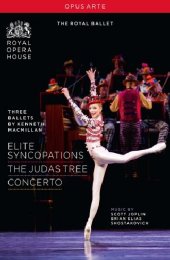

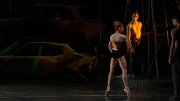

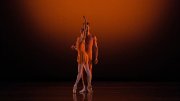
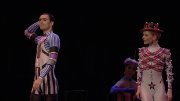
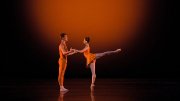
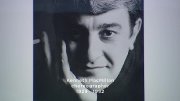
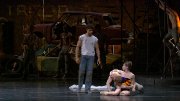

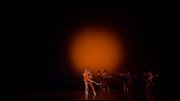
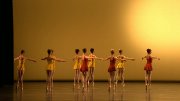

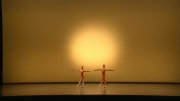
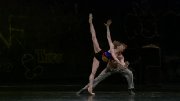
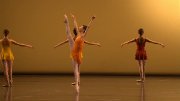
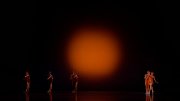
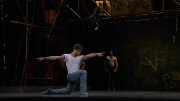
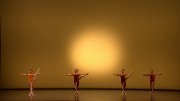
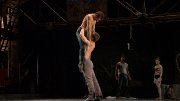

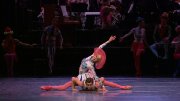
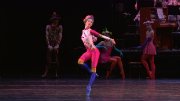
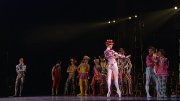
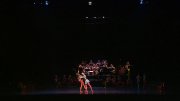
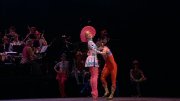
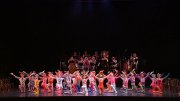
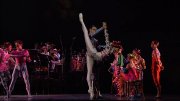
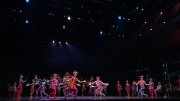
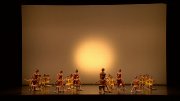



































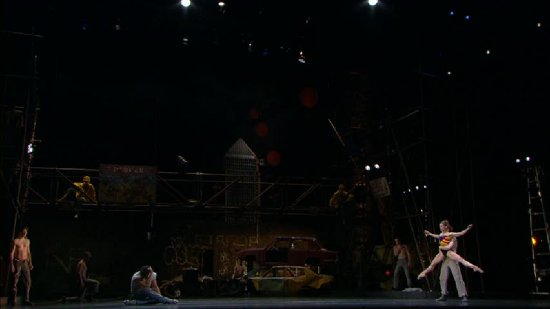







Your Opinions and Comments
Be the first to post a comment!